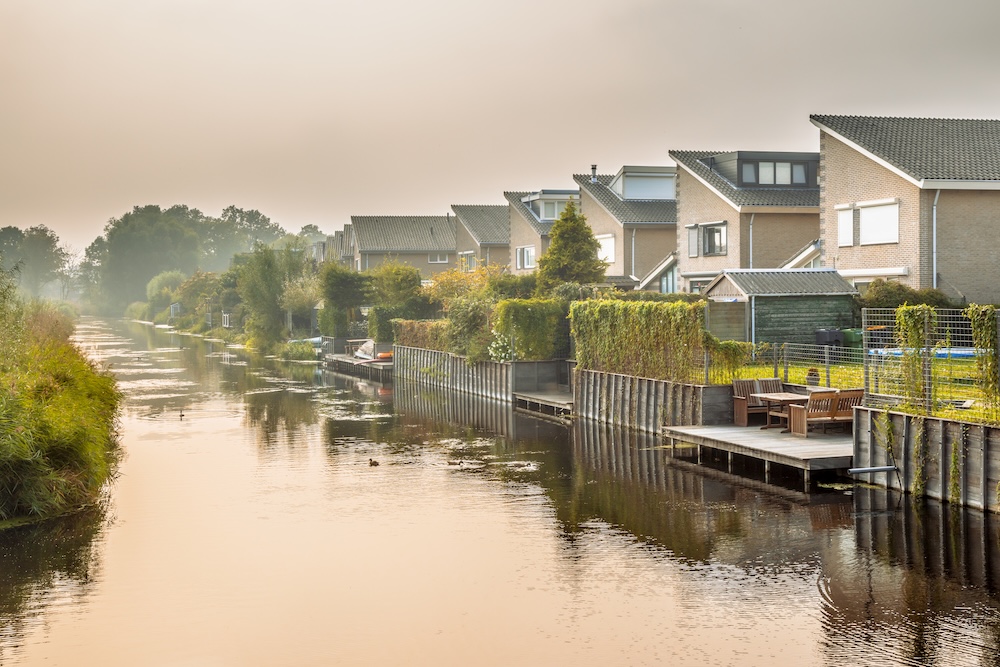Ocean Views Come With a Rising Price Tag — and We’re Not Talking Real Estate
For generations, waterfront living has been the pinnacle of the good life — panoramic views, salty air, and a front-row seat to every sunrise. But as the seas creep higher, storms hit harder, and insurance vanishes into the wind, a harsh truth is surfacing:
That dream home by the water? It might be your biggest liability.
The true cost of coastal living is no longer just about property taxes or luxury premiums. It’s about climate exposure, infrastructure failure, financial risk — and whether the land your house sits on will still exist in 25 years.
Let’s unpack the real price of living on the edge.
Coastal Properties Are Losing Ground — Literally and Financially
According to Climate Central, nearly 650,000 U.S. properties are projected to be at risk of chronic flooding by 2050. That’s not “occasional puddles.” That’s frequent inundation that damages homes, roads, and sewer systems on a recurring basis.
And it’s not just the U.S.:
- In Australia, properties along the Gold Coast and Sydney’s Northern Beaches are facing devaluation and insurance loss
- In the U.K., entire neighborhoods are being flagged as “not worth defending” from sea-level rise
- In Florida, some banks are already denying 30-year mortgages for beachfront properties
So yes, the views are still nice. But the water is getting closer — and the value proposition is getting shakier.
The Unspoken Expenses Lurking Behind the View
Let’s look at the hidden costs most real estate brochures never mention:
1. Insurance Headaches and Premium Hikes
Flood insurance used to be a formality. Now? It’s a make-or-break expense — if you can even get it.
- FEMA’s Risk Rating 2.0 reform means flood insurance is now priced by actual risk, not broad zones.
- In high-risk areas, premiums are skyrocketing — in some cases, more than doubling.
- Private insurers are pulling out of flood zones entirely in states like Florida and Louisiana.
And then there’s wind damage, erosion, saltwater corrosion… All of it drives up premiums, deductibles, and exclusions. Living on the coast could cost you thousands more per year in insurance alone.
2. Infrastructure Failure
Storm drains backing up. Roads eroding. Power outages every time the wind picks up.
Many coastal communities were never built to withstand modern sea levels or Category 4 hurricanes. And now the maintenance bills are stacking up:
- Sewer systems are overwhelmed during high tides
- Septic tanks are failing due to saltwater intrusion
- Roads are crumbling from below due to saturated ground
The local tax base — often made up of retirees and second-home owners — can’t always cover the cost. Guess who ends up footing the bill? You.
3. Decreased Resale Value
Want to sell your house in 10 years?
Buyers are getting smarter. Real estate platforms now include flood risk scores, climate projections, and neighborhood adaptation efforts in listings. And younger buyers — especially millennials and Gen Z — are thinking long-term.
That means:
- Fewer buyers competing for high-risk homes
- Longer time on market
- Lower sale prices
- Stranded assets (properties no longer worth selling or insuring)
Coastal homes used to be a flex. Now they’re often a question mark.
4. Financing and Lending Barriers
Banks are beginning to hedge their bets.
Some are:
- Limiting mortgage terms in flood zones (15-year max instead of 30)
- Requiring flood insurance regardless of FEMA zones
- Declining loans outright in high-risk areas or requiring massive down payments
You may still qualify today — but the financing window is shrinking. Fast.
5. Psychological and Emotional Toll
No one talks about the mental health side of waterfront risk — but it’s real.
- The anxiety of watching flood forecasts every hurricane season
- The stress of dealing with property damage again and again
- The grief of seeing cherished places eroded, ruined, or washed away
Living on the edge means living with the possibility of loss. And that weight grows heavier with every passing year.
The Rich Can Retreat. The Rest Can’t.
Here’s where it gets uncomfortable.
In luxury markets, some owners can afford to absorb the losses — or relocate when the tide turns. They treat waterfront properties like seasonal assets, not lifelong homes.
But for everyday homeowners?
- It might be their only home
- Their retirement plan
- Their family history, identity, and stability
Sea-level rise is not an equal-opportunity disaster. It’s deepening inequality — and flooding the financial futures of those with the least room to move.
What to Know Before You Buy (or Stay)
If you’re considering waterfront living — or already live there — ask these questions first:
- Is your home in a FEMA flood zone?
- What’s your Flood Factor score? (RiskFactor.com)
- How much will flood insurance cost today — and in five years?
- What’s the elevation of your property, and how close is the water table?
- Does the community have a climate adaptation plan?
- Is there a buyout program in place if the area becomes unlivable?
- Can you afford to leave if you had to — or would you be stuck?
Knowing the answers could save your wallet — or your life.
Final Thoughts: Is the View Worth the Risk?
We’re not saying no one should live on the coast.
But the days of assuming beachfront property is always a good investment? Those are over.
Now, it’s about informed risk, realistic planning, and rethinking what “value” really means.
Is the ocean beautiful? Absolutely.
But it’s also rising, relentless, and totally indifferent to your appraisal.
If you’re going to live at the edge of the world, make sure you’ve read the fine print beneath the waves.









Reader Interactions